- Small Dog Place Home
- Training
- Training Small Dogs
Training Small Dogs The Right Way: Super Effective Guide
Training Small Dogs by Robert Michael |Updated 07-06-2023
Training the small dogs is just as much important as training the large dogs. Owners should pay more attention in training their small dogs because they need more time and effort.
 Training Small Dogs the Right Way
Training Small Dogs the Right WayThe lack of concentration and proper training can lead your dog towards some behavioral problems like; barking, aggression, and pushiness.
No matter what the size of a dog is, a well mannered and a well-trained dog is much better companion than one with bad behavior and bad manners.
Below mentioned are
some important tips to help you in training your dog perfectly!
Having a trained and a well-mannered dog is a very good thing because if your dog knows few most essential basic commands, then it can be very much safe and helpful for you to tackle all the behavior problems - that may sometimes develop in future.
- Just Keep your Attitude Right and Positive!
When training a small dog, there are a few important things to keep in mind:
- Be patient: Small dogs may take a little longer to grasp new commands, so be patient and consistent in your training efforts.
- Use positive reinforcement: Reward your small dog with treats, praise, and affection when they exhibit the desired behavior. This helps them associate training with positive experiences.
- Keep training sessions short: Small dogs have shorter attention spans, so keep your training sessions brief and engage them in regular, short bursts of training throughout the day.
- Tailor training to their size: Consider your small dog's physical limitations and adjust training exercises accordingly. For example, use shorter, low-impact exercises to avoid strain or injury.
- Socialize your small dog: Expose them to different environments, people, and animals to help them become well-rounded and confident.
- Housetraining may require more frequent trips outside: Small dogs often have smaller bladders, so be prepared for more frequent bathroom breaks during housetraining.
Remember, consistent training and positive reinforcement are key to successfully training a small dog.
Essential Steps to Training Small Dogs the Right Way
Sit
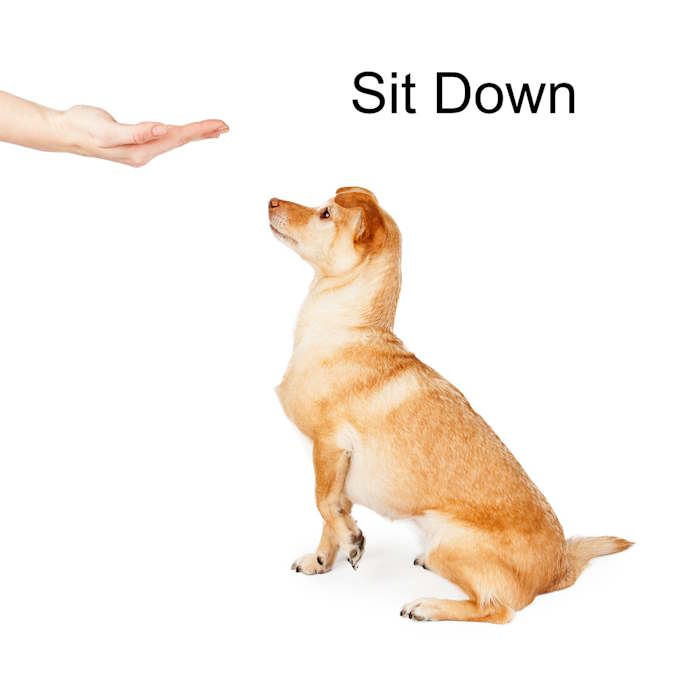
This step is one among the best dog training commands to show obedience. Thus it’s a decent one, to begin with.
- Hold a treat near the nose of your dog.
- Move your hand up and down, permitting his head to follow the treat and inflicting his bottom to lower.
- Once he’s in sitting position, say him to Sit, give him the treat, and share the feeling.
Repeat this step a couple of times each day till your dog has it down pat.
Come
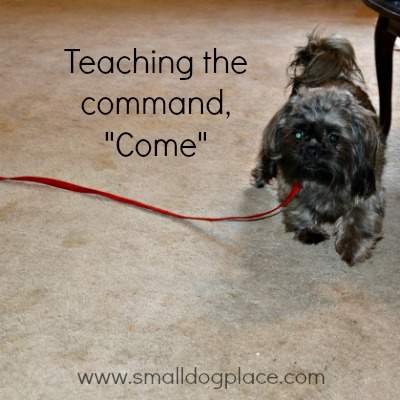
This is the most important command for a dog to learn because it will keep him away from danger or trouble, this helps to bring him back if you accidentally lose hold on the leash.
- Put a collar and a leash on your dog's neck.
- Sit down close to him and say "come" and pull the leash slightly so that he can understand your actions.
- Once he gets to you, then give him a reward or his favorite treat.
After several attempts with the leash, remove it and then try without a leash in a safe area.
Down
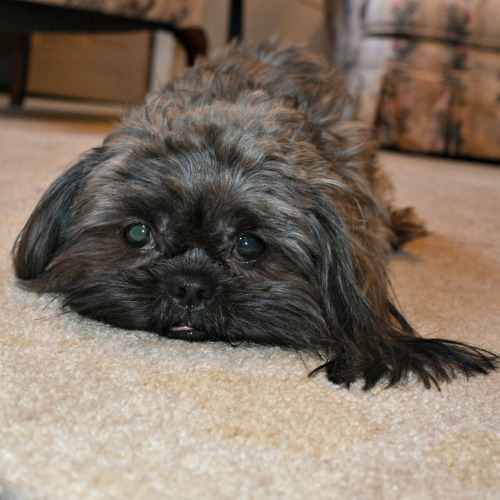
This is one the most difficult command for a dog to learn, keep your dog relaxed and then train him with this command.
- First get a good smelling treat for your dog.
- Let him smell the treat, and move your hand towards the ground, so that he can follow.
- Move your hand again and encourage your dog to follow this action so that his body can learn to bend down.
- And when he's in the down position, command him down and provide him the treat and love him.
Repeat this action daily so that he can learn easily.
Stay
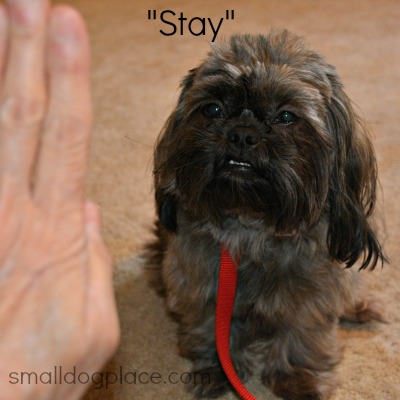
Before learning this command, a dog should need to learn the sit command.
- Ask your dog to sit first.
- Then show him your hand and tell him to stay.
- Reward him with the treat and share love.
Then repeat this action again and again, but every time, increase the reward or treat. This allows your dog to learn self-control.
Learn more about basic commands.
Training Small Dogs to Walk on a Leash
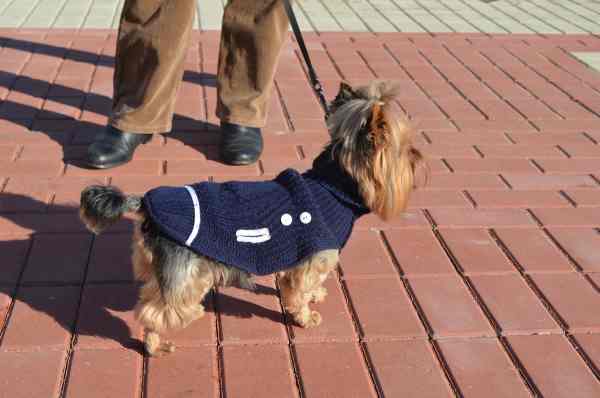
Walking on a leash is an important skill for small dogs, ensuring their safety during outdoor adventures. Begin by introducing your small dog to the leash in a positive and calm manner. Allow them to sniff and become familiar with the leash before attaching it to their collar or harness.
Start in a quiet, distraction-free environment and gradually increase the level of stimulation as your small dog becomes more comfortable. Use treats and praise to reward your dog for walking beside you without pulling. If your small dog starts to pull, stop and wait for them to return to your side before continuing.
Consistency is crucial when teaching leash manners. Keep training sessions short and gradually increase the duration and complexity of walks. Remember to choose a comfortable and properly fitting harness or collar for your small dog to ensure their safety and comfort while on a leash.
Learn more about leash training.
Special Considerations Important for House Training
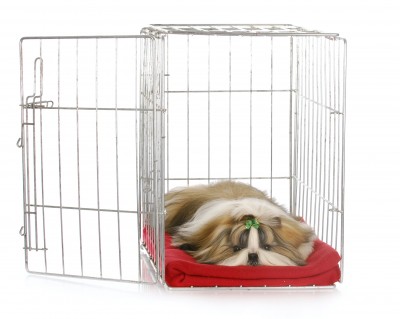
Provide them the safer environment, and let them try the same techniques that work on large dogs. And also teach them to use the litter box.
Housebreaking and potty training are essential for small dog owners to maintain a clean and hygienic living environment. Consistency and patience are key when teaching your small dog where and when to eliminate.
Establish a routine by taking your small dog outside to the designated potty area at regular intervals. This includes first thing in the morning, after meals, after playtime, and before bedtime. Be sure to use a consistent command such as "go potty" to help your small dog associate the cue with the action.
When accidents happen indoors, avoid punishment as it can create fear and confusion. Instead, redirect your small dog to the appropriate spot and clean up the mess using an enzymatic cleaner to eliminate odors.
Remember, small dogs have smaller bladders and may need more frequent bathroom breaks. With patience and consistency, your small dog will learn to eliminate in the appropriate location.
More about housebreaking a small dog.
How to Crate Train Your Small Dog
Teach your dog to use a Doggie Door
Advanced Obedience and Sports
Small dogs have an active mind, let them try different activities so that they can learn and let them do these activities on a daily basis. Likewise, small dogs can do better at sports, etc. One favorite sport for small dog lovers is agility.
Just with little carefulness, the right training and socialization; small dogs can become great companions.
Training Small Dogs Schedule
Create a safe environment for your dog and set a proper schedule for your dog's training like:
- Crate training - 2 to 3 months maximum
- Housebreaking Training - 2 to 3 months
- Acceptance of being handled for about 2 to 3 months maximum
- Gentleness training - 1 to 2 months
- Household rules - 2 to 3 months
Conclusion
Training a small dog requires time, patience, and dedication, but the rewards of a well-behaved and happy companion are well worth the effort.
By understanding the importance of training, employing effective techniques, and addressing common behavior problems, you can establish a strong bond with your small dog and ensure their optimal behavior.
Investing in their training from an early age will set a solid foundation for a lifetime of positive interactions, both at home and in the wider world.
So, take the time to train your small dog and witness the transformation as they become a well-mannered and beloved member of your family.
Author Bio

Robert Michael is professional dog trainer having an experience of almost 8 years now. And he loves to contribute to the pets blog to enjoy his passion. I write free of cost for the pets blog, do you have?
About Janice (author and voice behind this site)
Having lived with dogs and cats most of her life, Janice served as a veterinary technician for ten years in Maryland and twelve years as a Shih Tzu dog breeder in Ohio.
Her education includes undergraduate degrees in Psychology with a minor in biology, Early Childhood Education, and Nursing, and a master's in Mental Health Counseling.
She is a lifelong learner, a dog lover, and passionate about the welfare of animals. Her favorite breed for over 50 years has been the Shih Tzu, but she has also lived with poodles, Maltese, Yorkshire Terriers, beagles, English bulldogs, carin terriers, and a Cocker Spaniel.
When not writing, reading, and researching dog-related topics, she likes to spend time with her eight Shih Tzu dogs, husband, and family, as well as knitting and crocheting. She is also the voice behind Miracle Shih Tzu and Smart-Knit-Crocheting
Does This Article Deserve Your Thumbs Up?
We always appreciate your support and encouragement. Your thumbs up means so much to us. Please like this article.
If you find this page or any page on Small Dog Place Helpful, or useful in anyway, I'd love it if you would click the small heart found on the bottom right of each page.
You can also share or bookmark this page -- just click on the:

Free Monthly Newsletter
Sign Up for Our Free Newsletter and get our Free Gift to You.
my E-book, The Top 10 Mistakes People Make When Choosing a Dog (and how to avoid them)


